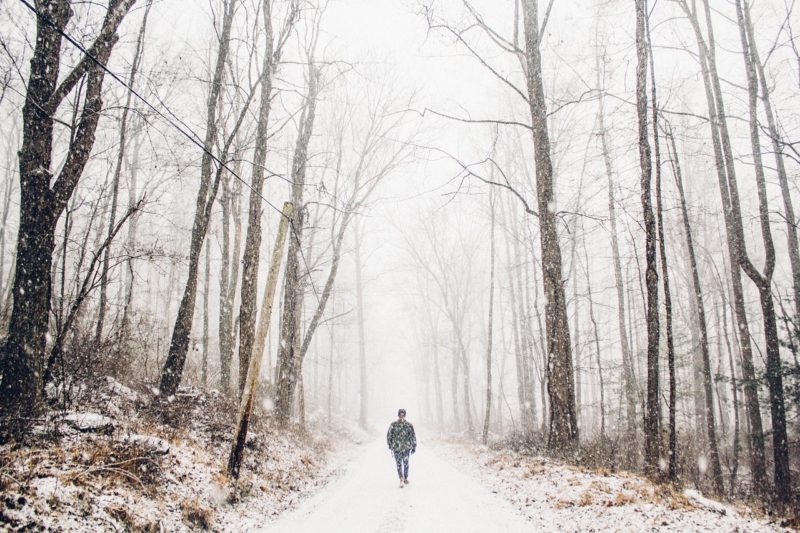One of my favorite writing exercises is to have students create poems inspired by photographs. I find that working with these images allows them to observe a moment in time, focusing on small details while also exploring the broader context of the photo, extending and speculating beyond what the camera captures.
For one such assignment, which I call the parent poem project, I ask students to bring in a photograph of one of their parents (or a close relative or guardian), preferably one taken before the student was born. I want students to consider their mother or father as a person before parenthood. My students are high school age and at this point in their lives many have begun to experience a push-pull dynamic in the relationship with their parents: They are striving to spread their wings, to have more independence, but also may feel a sense of connectedness to and reliance on their parents.
Of course, some students will not have access to these types of family photos for various reasons. When I assign the project, I make sure to emphasize that students are welcome to bring in photographs of any adult they admire, find interesting, or who might be a role model for them. The photograph they choose can be from a newspaper, the web, or even in a book. One year I provided a selection of magazines for students to browse through.
One of the great parts of this activity occurs before the writing even begins when students share the photos they have selected with their classmates. I’ve had students bring in photos of their parents at their high school prom, playing school sports, or, in one case, of their mother as the homecoming queen. These always spark a lot of interest because the person in the photo is near the age of the student. Other students have brought in photos of their parent at a first job, working on a car, riding horseback, and sitting with grandparents at a family reunion. As an alternative to a photo of a parent, one student brought in a black and white photograph of the indie singer, Ani DiFranco. Another student picked through a stack of photos I had cut from various photography magazines. His eyes lingered over the one he chose: a young man leaning against a brick wall, one leg bent with the sole of his shoes pressing against the wall behind him, head turned as if looking up the street in anticipation.
Close reading of mentor poem
Before we get to the writing assignment, I have the students read a poem as a mentor text. My goal is for them to see “the hand of the writer” and work toward understanding the decisions a writer makes in composing a poem. The challenge is asking the right questions to get students started and then relinquishing control so that students may pose their own questions.
While there are plenty of choices for poems about parents, I use “Photograph of My Father in His Twenty-Second Year” by Raymond Carver. The poem provides a model for our task at hand as Carver studies a photograph of his father.
Photograph of My Father in His Twenty-Second Year
by Raymond Carver
October. Here in this dank, unfamiliar kitchen
I study my father’s embarrassed young man’s face.
Sheepish grin, he holds in one hand a string
of spiny yellow perch, in the other
a bottle of Carlsbad Beer.
In jeans and denim shirt, he leans
against the front fender of a 1934 Ford.
He would like to pose bluff and hearty for his posterity,
Wear his old hat cocked over his ear.
All his life my father wanted to be bold.
But the eyes give him away, and the hands
that limply offer the string of dead perch
and the bottle of beer. Father, I love you,
yet how can I say thank you, I who can’t hold my liquor either,
and don’t even know the places to fish?
I pass out copies of the Carver poem and ask the students to read it to themselves. When they are done I read it aloud to them. After these two readings, I invite students to do a quick write on their impression of the father in the poem. Or I might ask them to write about their initial understanding of the relationship between the father and the speaker, who may or may not be Carver himself.
Next I take them through a series of tasks identifying specific uses and kinds of language in the poem. After each task we take time to listen to and discuss their choices.
- First I ask them to underline the concrete images the poet associates with this person who is the subject of the poem. They may underline spiny yellow perch, Carlsbad beer, jeans, denim shirt, leans, eyes, hands.
- After this I ask them to circle words, images, or phrases that describe the father: embarrassed, young man’s face, sheepish grin, pose bluff, hearty, wanted to be bold, limply.
- To help them understand how the poet conveys a sense of the space that the people in the poem occupy, I ask them to draw a box around words that describe where the poem takes place — October, dank, unfamiliar, kitchen.
- Next I ask them to put a star next to any words that may reveal the relationship between the two people in the poem: study, love, yet, either, don’t even know.
- And finally I ask students to return to the poem to mark any shifts in it by putting a line between or within stanzas to show where the shift occurs. I use the word “shift” to begin conversations about structure of a text, and explain that a shift could be seen or heard in tone, idea, or theme. I want them to listen to the movement of the poem. Students will likely place marks between the second and third stanzas. Students who read more critically may place a mark before “He” in the second stanza and “yet” in the third. The power of this task comes in having them defend where they placed the marks — where did they see a shift in the poem?
After they have gone through this series of tasks, I have the students do another quick write in answer to the following question: In what ways has the close study of the poem impacted the impression you had after the first reading?
These tasks can be done individually, in pairs and small groups, or as a whole class. My goal is to help students understand how language functions within a poem and to lead them to a deeper understanding of Carver’s poem before they go on to write their own.
Brainstorming their own poem
Now we turn our attention to the photographs the students have brought in. I tell the students, I want them to “study” their images, as Carver did. What are the implications of that word? It is more than a casual glance at the photograph, more than a quick and perfunctory look that we may give a photo in an album. I suggest to them that Carver was implying that he was trying to learn something about his father, maybe understand him better. Carver’s question at the end of the poem reinforces the idea of studying the photo to answer questions he may have about his relationship with his father.
Once again, I take the students through a sequence of tasks, inviting them to look closely at their photos while asking them to do the following:
- List some concrete, specific details about the person in the photograph.
- List interesting details about other things in the photograph: the setting, objects in the photograph. Get down the details that reveal place or the scene.
- Return to the place or scene of the photo. Can you identify a time period or place by those details?
- Now go a little deeper. Look at the person in the photo. What are the person’s fears? What are the person’s ambitions? This is all speculation and conjecture, but let yourself be that person in that scene. What does that person want out of life?
- Can you make any connections between the time, the place, the person, and the emotions the photo evokes? Stretch yourself. Don’t let facts get in the way of a good poem!
- Now free write for 7-10 minutes on your “study” of the photograph. What discoveries did you make – either about the subject in the poem or maybe about yourself. You don’t have to worry about any poetic form at this point, I tell them. We are reflecting on this now because I want you to be aware of and capture any thoughts about you or your relationship with the person in the poem that got “uncovered” in this process.
I build in time at the end of the class for the initial drafting of the poem. Depending on the culture of the classroom and other considerations, students may share their drafts, or at least part of their draft — an interesting image they have composed, a line or two, or even simply the idea that they are working on — with their small group or another student. Before they leave class, though, I want them to have a start on the poem. The actual composition will take place later, outside the classroom. This allows them to find their own individual space, a comfortable place at home or maybe outdoors, in which to compose. I leave the form the poem will take up to them.
My initial motivation for the parent poem project arose from class discussions of the literature we studied. Students were very engaged when those conversations focused on parent-child relationships in the novels and short stories we read. I saw high school freshmen and sophomores become animated when we discussed Antonio’s struggle to make sense of his parents’ conflicting values and beliefs in Rudolfo Anaya’s Bless Me, Ultima. Similarly, my older students closely analyzed Macon Dead, Jr, aka Milkman, in Toni Morrison’s Song of Solomon, and the strained relationships he had with both parents. Clearly, adolescent students want to share their observations of parent-child relationships, and powerful literature makes those discussions easier to have.
My other motivation, purely self-centered, stemmed from my own exploration of my relationship with my father. Carver’s poem “spoke to me,” to put a well-worn phrase to use, as did Roethke’s “My Papa’s Waltz.” My own enthusiasm for the project ignited something in students. The combination of literary examples and sharing personal experience created a rich writing environment.
While some students have certainly created beautiful poems, I believe this project’s energy is found in the entirety of the process. It’s in the students’ study of the photos they bring in, in the mentor texts and other literary models they explore, in the rich classroom discussion generated by their engagement, as well as in the actual writing they do. This layered process is reflected in the students’ final poems, where they consider such things as individual motivations and ambitions, family history, internal and external conflicts, and the expectations they have for others in their lives — and for themselves.
Other “parent poems” you might use for this exercise
“My Father in the Navy: A Childhood Memory” by Judith Ortiz Cofer
“Parents’ Poem” by Jacqueline Woodson
“My Papa’s Waltz” by Theodore Roethke
“Morning Song” by Sylvia Plath
“Digging” by Seamus Heaney
Over his 35-year career in Education, Vince Puzick has taught college composition, high school English, and has served as a literacy coach and Language Arts Content Specialist at the district and state levels. Currently, he is a writer and literacy consultant. He lives in Colorado with his wife, daughter, and two stepdaughters



